This is the last week to catch Paula Crown’s “Solo Together,” on view at 10 Hanover in London. Visitors will arrive to a gallery that appears to have been the site of a wild party the previous night. What they’re seeing is Crown’s new series “Solo Cups,” comprised of 150 plaster casts of the everyday disposable cup. That body of work is shown along the Chicago-based artist’s site-specific Freezing Rain, and “Kinematic” mixed-media prints.
We spoke with the multi-media artist about the intrigue of the Solo Cup, FOMO, and sustainable art practices.
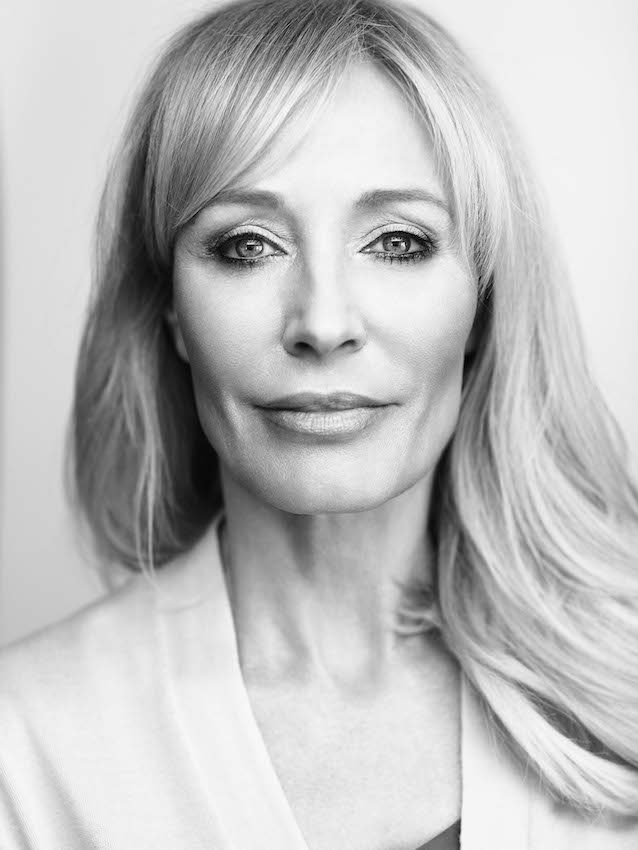
Photo by John Russo
Courtesy of PAHC / studio
WHITEWALL: How did you arrive at the Solo Cup initially? What first interested you in this ubiquitous, cheap, disposable party cup?
PAULA CROWN: There is a difference between looking and seeing. Intense visual focus and imagination can yield new points of view. Contexts can alter and expand. The red Solo Cup holds many connotations for me. It is a playful form as the iconic cheerful bright red signifies parties and social life. It is a plastic form meant to be convenient, consumed, and “trashed” if you will. I’m interested in its multifaceted place in our culture, stuck somewhere between an era of abundance for many where convenience has been paramount and the era we are entering now- defined by limited resources, changing climates and a responsibility for that convenient excess. Single use plastics are something “cheap” that we can no longer afford.
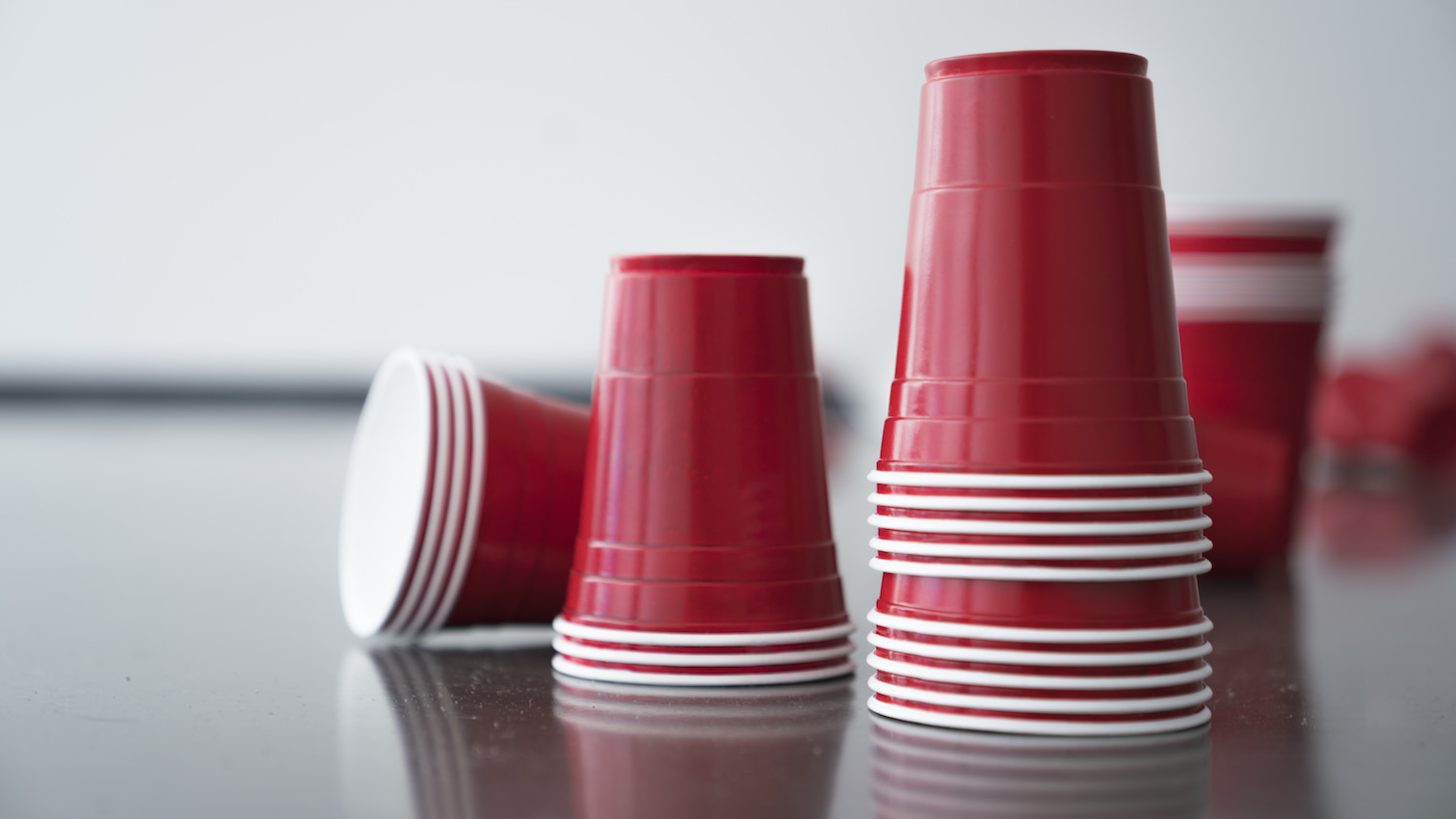
Installation view of Paula Crown’s “Solo Together” at 10 Hanover in London.
The plastic cup is a conduit of social energy. We hold these in our hands at gatherings and we mark them, consciously or not. I wanted to bring attention to the uniqueness of each gesture expressed through these cups by replicating them directly. They are indices of touch and presence.
WW: You chose to use plaster, for the recreation of the cup. Why did you want to alter the material of the object?
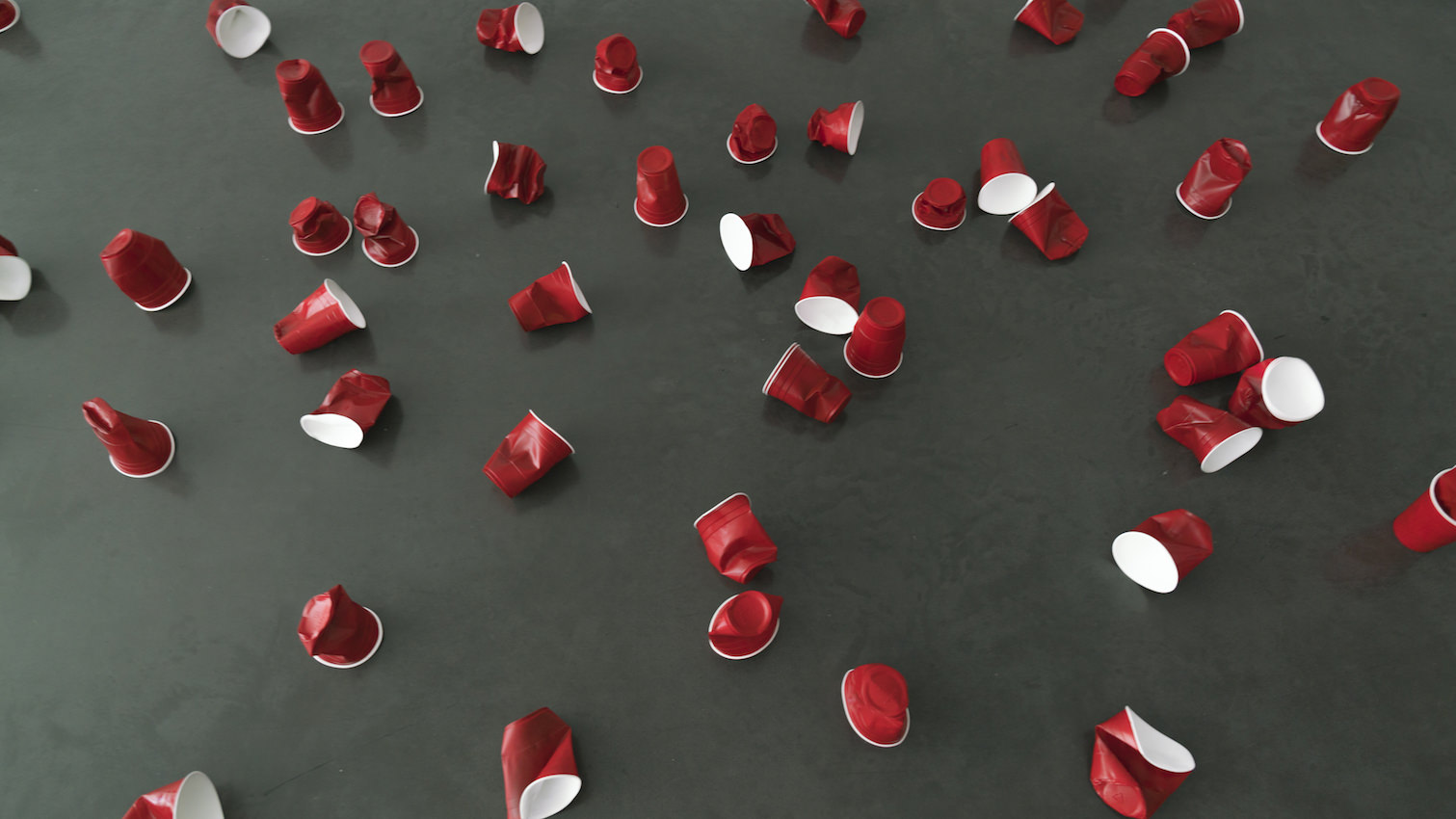
Installation view of Paula Crown’s “Solo Together” at 10 Hanover in London.
PC: I look for the best way to manifest an idea through a material. For “Solo Together,” the characteristics of the mark dictated the use of plaster. The installation reflects an experience and an intrinsic response to society and our surroundings.
There is meaning in distancing the symbol of the artwork from the original icon of the red Solo Cup. My intention was not only to replicate the form but to offset the sculptures from the forms in culture. There is an uncanny weight to each of these forms because they are uniquely cast from plaster. The inside of each cup is organic and less refined than the sleek interior of a plastic cup. These sculptures imply an interiority. They are vessels of the emotional energy of the holder.
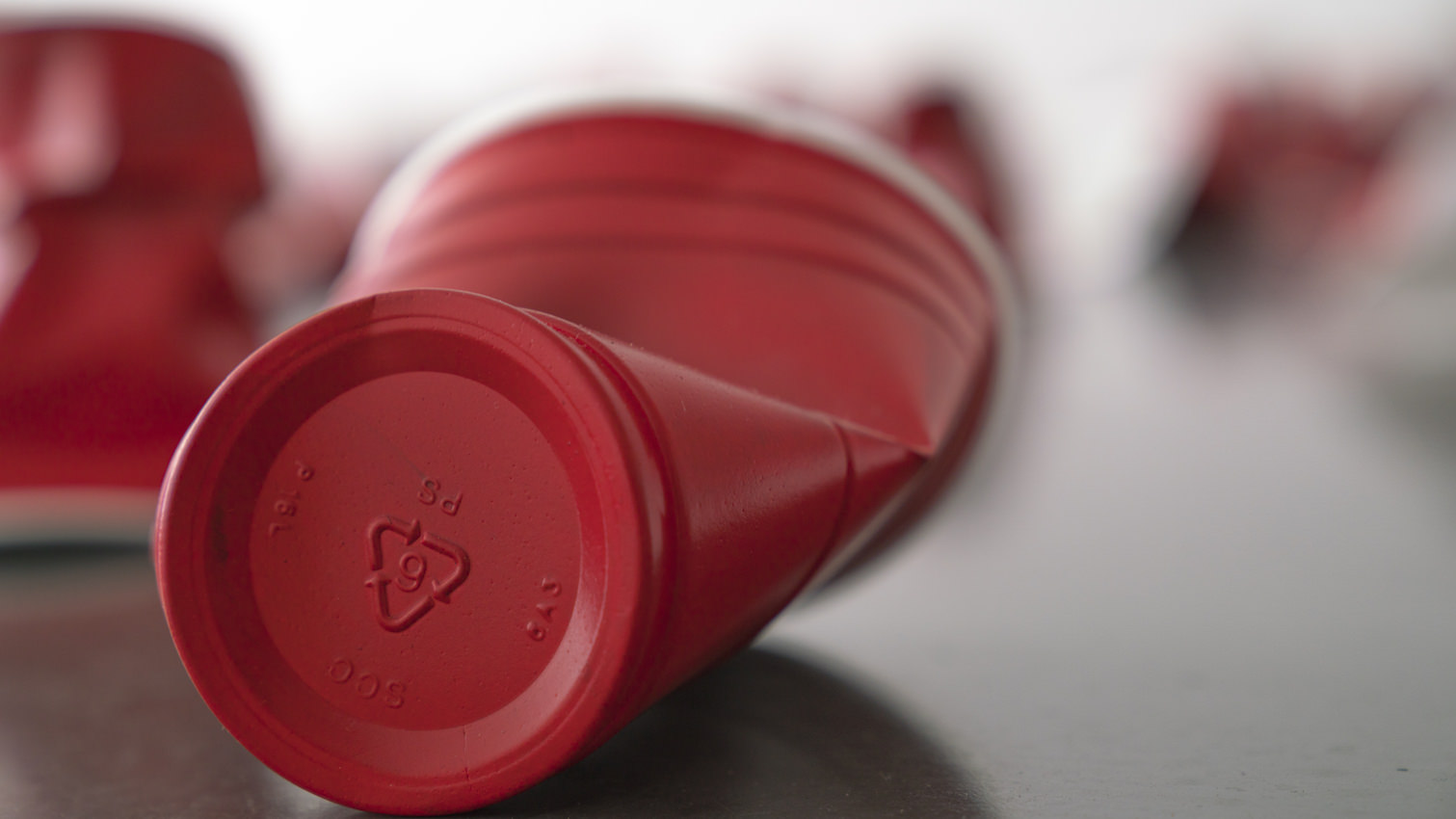
Installation view of Paula Crown’s “Solo Together” at 10 Hanover in London.
Each composition is titled individually, not only to personify the form but also to evoke the energy that can be transferred to material and to our environment. They are painstakingly painted by hand in layers of tonal reds. The original object’s manufactured convenience and disposable nature is inverted to be a fragile and labored likeness. Painting these statuesque forms, I thought of Caravaggio’s use of deep reds and the topological folds of fabric he depicted in his works.
WW: The installation of 150 cups, leaves viewers with the feeling that they are arriving at the party too late. Why did you want to tap into that feeling?
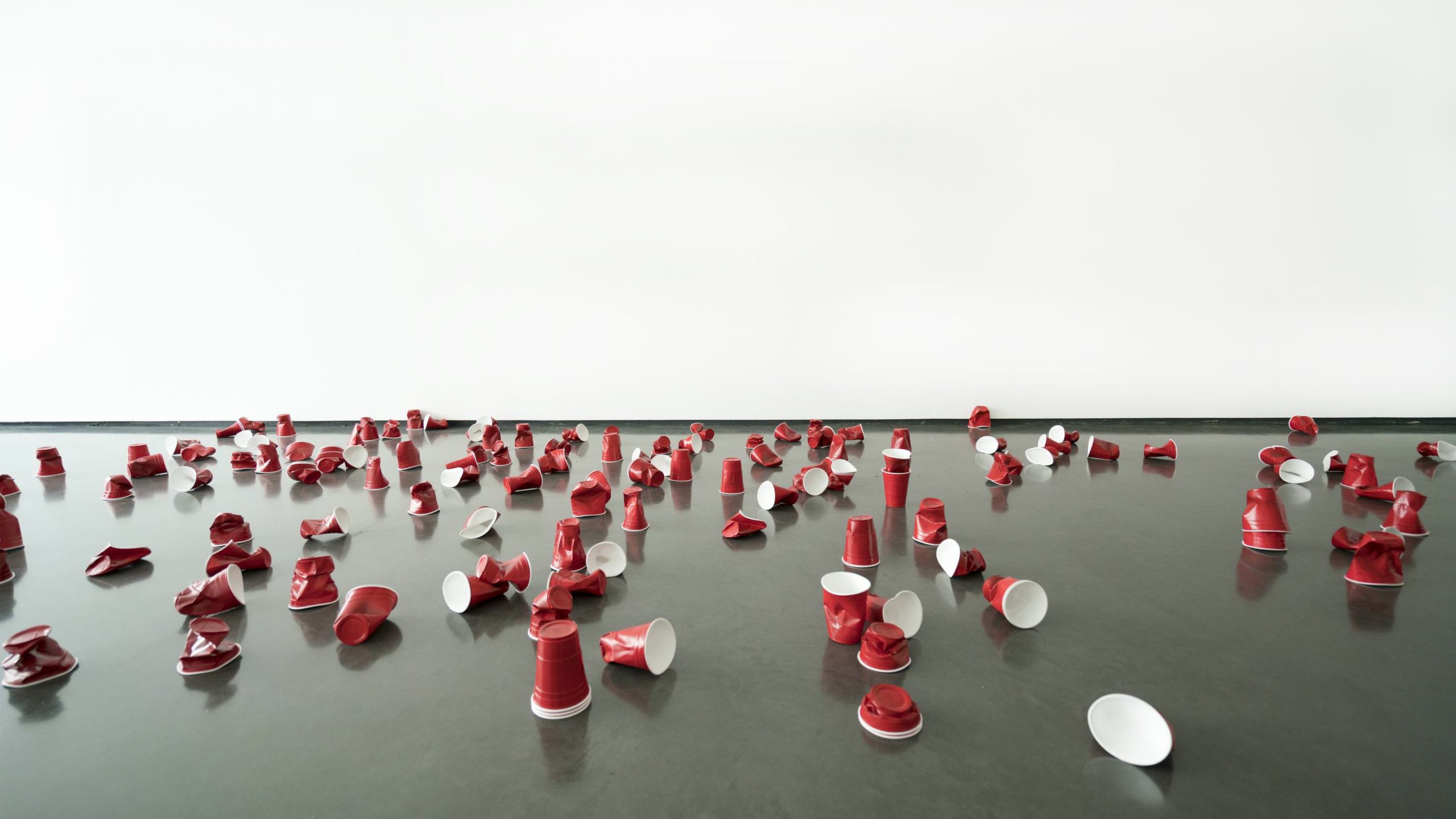
Installation view of Paula Crown’s “Solo Together” at 10 Hanover in London.
PC: Thinking about the connotations of this form lead me to think about social anxiety and how the fear of missing out (FOMO) is amplified in our contemporary moment. Social media platforms reinforce being seen at the scene. The trope of everyone at a party together with the same red cup presumes, at least visually, a certain unity or homogenous togetherness. What we experience is the juxtaposition of connectedness and a nervous desire to be included and never isolated. Are we ever really present and not mediating an experience with our cell phone cameras? Are we all just in separate solos together?
WW: What kinds of questions do you want the viewer to be asking?
PC: Can I look more closely? Capturing viewer’s curiosity and offering a moment to pause and inspire conversation is important. At first, I think people are attracted to the sculptures formally. Are they really just cups? The bold color draws people in and evokes personal memories of the form. After that initial feeling of “What happened here?” and “What party did I miss?” I hope questions about the marks and materials open up. This work is a memento mori…it speaks to the transience of our experiences, material goods and what we leave behind.
I hope to prompt questions of our larger interrelationship to each other and our environment. “What happens to all this plastic? Who cleans this up and takes it away? Where does it all go?”
WW: The abundance of cups also touches upon the sheer amount of plastic waste in our day to day lives. As a fine artist, what waste concerns do you have in your day to day practice?
PC: It’s a shared concern of contemporary society. I look for ways that we can push art practices further towards the sustainable and less toxic. It’s a challenge. I frequently reuse existing materials and experiment with newly formulated technologies in my work. PAHC / studio•lab received Gold LEED status for its sustainability and healthy environment. Beyond practicing this consciousness in the studio, I think about how the work itself can evoke awareness of our society’s struggle with managing our planet’s resources and consider the lasting marks we leave on our environment. There is no Planet B.
WW: What was it like creating 150 units of the same shape (pre-crushing) and material? How did the repetitive nature of the making affect your relationship with this process?
PC: At one point, my floor was filled with iterations of twisted, mangled and torn cups. I had flashbacks to my University days and tapped others for their experiences. I tried to create variety and considered ways of imbuing each one with personality. After so many accumulate, you lose yourself in creating the folds. Some gestures were more intuitive and others more labored. Ultimately, the abstraction of the shapes takes hold. The dynamism of the compositions began to reflect the energy transferred through repetition, reacting to the material and imagining projected personifications.
“Solo Together” is on view at 10 Hanover in London through July 16.









